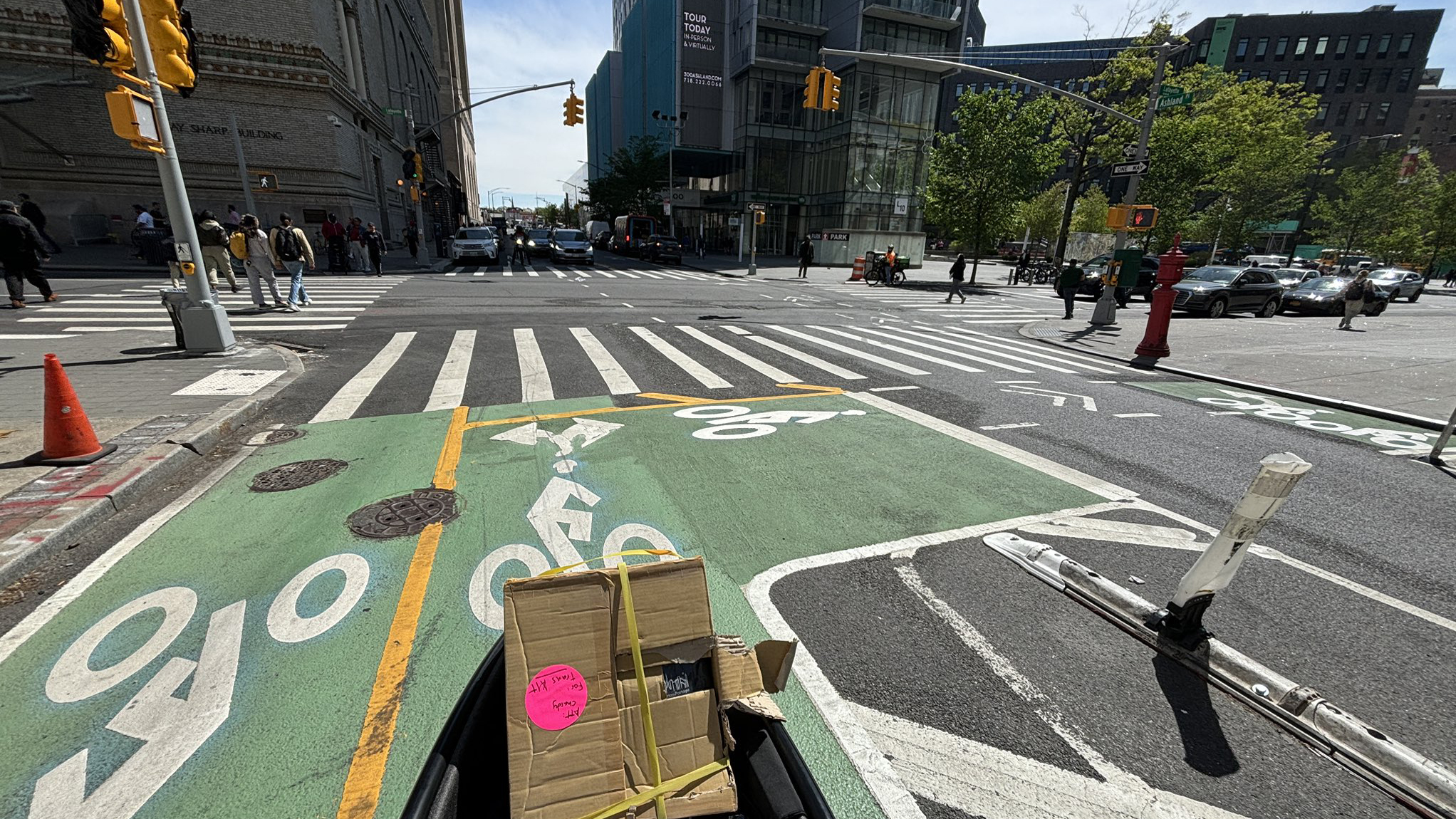Last week we ran a post in response to CBS2's "Bike Bedlam" series in which we published a table showing a downward trend in NYC bike-on-ped injuries. In response, we received a few inquiries about how the data was collected and what it represents. After following up with agencies and organizations involved in crunching crash information, Streetsblog is retracting the data we posted last week, after concluding that the table was based on a faulty interpretation of injury statistics by the NYC DOT press office.
I'm also extending an apology to CBS2's Tony Aiello. The injury data I used to rebut his "Bike Bedlam" segments were erroneous. I accused him of not thoroughly reporting his story, while my own reporting rested on faulty information.
We received the stats from the NYC DOT press office, which generated them by querying data compiled by the state DOT. According to Carol Breen at the state DOT press office, the agency does not collect data on bike-on-ped injuries, but does collect information about crashes in which at least one motor vehicle, pedestrian, and bicyclist are all involved. The state DOT suggested the city DOT press office may have mistakenly cited this dataset.
Seth Solomonow at the NYC DOT press office said the data they culled from the state was labeled as bike-on-ped injuries:
NYC DOT does not keep or maintain traffic stats, but we can query those kept by NYPD and the State. The info we queried was from the State system and reflected data involving pedestrians injured in incidents with bicycles, with no motor vehicles indicated. We're reaching out to the state, but they would not be expected to confirm queries performed by third parties on the potentially millions of different data points that are collected and stored.
So do bike-on-ped injuries make it into the state DOT database? To answer, you need an all-encompassing view of the movement of crash data, which originates from local police departments and other sources (like coroners' offices) all over New York state, and gets collected, consolidated, filtered, analyzed, and compiled by a handful of statewide agencies. Few people know the process inside and out. But Anne Dowling, deputy director of the Institute for Traffic Safety Management and Research, is one of them. She says that bike-on-ped injuries would never appear in the state DOT's crash records.
The ITSMR is based out of the University of Albany, where its staff crunch crash records by the hundreds of thousands. According to Dowling, her group receives about 300,000 records of motor vehicle crashes each year, records that were initially collected by the Department of Motor Vehicles. The ITSMR scrubs the data to ensure that it's internally consistent, and runs an algorithm on the records to assign values for the severity of injuries caused -- serious, moderate, or minor.
The state DOT crash database gets information straight from DMV, said Dowling, and DMV does not make records of strictly bike-on-ped injuries available. While DMV may receive accident reports from NYPD generated by bike-on-ped crashes, Dowling explained that those records would be screened out before getting passed on to the ITSMR or state DOT.
"When [the records] got into DMV, they would not enter them into their system," she said, "because no motor vehicle was involved." Only motor vehicle crashes that cause death, injury, or property damage exceeding $1,000 are entered into the DMV system, which state DOT can access via an electronic feed.
Based on Dowling's overview, the explanation from the state DOT press office -- that the city DOT press office misinterpreted crashes involving at least one motor vehicle, bicyclist, and pedestrian as bike-on-ped crashes -- seems likely to be true. Streetsblog regrets publishing the information.




